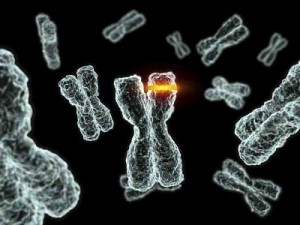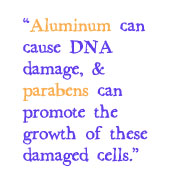Part 2 of 4
To understand this fully, let’s start with what we know so far about breast cancer.
There is an increasing incidence of breast cancer
 Long-term increases in breast cancer have been observed throughout the globe over the past three decades and is no longer considered a disease confined to Western or affluent societies
Long-term increases in breast cancer have been observed throughout the globe over the past three decades and is no longer considered a disease confined to Western or affluent societies
Epidemiological studies show that:
• 90% of breast cancer are environmental in origin.
• The occurrence is also linked to genetics. Breast cancer susceptible genes (BRCA1 & BRCA2) are identified. When these genes lose funtion, these account for 5-10% of breast cancer . However,the mechanism of susceptibility remains unknown.
• The main identified factors are hormonal and linked to lifetime exposure to estrogen.[1]
• Diet, smoking and alcohol can also exert influences [1].
• However, these only confer a small increased risk and the main causative agents of breast cancer remain unaccounted for.[2]
The Supposed Mechanism of Action – The Scientific Version
First off, we have to remember this piece of information from Darbre in 2003. He explains that there are two steps to cause breast cancer:
1) DNA damage, and
2) promotion of growth of these damaged cells.
Incorporating this with what we know so far about what underarm hygiene habits can do to bring about breast cancer, we have the following:
• Underarm cosmetics are frequently applied and placed on an area near the breast. They are not rinsed off or not rinsed off thoroughly, which allows accummulation of it over time.
• The extent to which these toxins penetrate the skin remains unknown.
• Aluminum occurs principally as aluminum chlorhydrate and the aluminum-zirconium chlorhydrate glycine complexes It is added to form a plug on the top of the sweat duct, preventing the escape of sweat onto the body surface. However, there is evidence that aluminum can bind to DNA and can cause changes in them which also may result to DNA damage.
• DNA damage could also occur, according to one other theory, through “axillary acid rain” from the accumulation of sweat as a result of antiperspirant action. Because our bodies normally excretes toxins through sweat, then these toxins accumulate in breast tissue. The lower pH of some aluminum salts combined with the microbial action on sweat results in an acidic underarm environment. (This may explain, at least in part, why world breast cancer incidence is lower in countries with different cultural habits or less disposable income for western axillary hygience practices or in areas with less media exposure, as in some rural areas.) [5] [7] [8]
• The deodorant components are to prevent the development of body odors through its anti-microbial properties. By killing bacteria, it masks, modifies or prevent the generation of odor.
• To increase the shelf-life of these products, preservatives are added, especially to stick, roll-on, and cream formations to prevent the growth of microbes or fungi in the containers. The alkyl esters of p-hydroxybenzoic acid, or parabens, have been widely used because of their high antimicrobial activity. (On a side note, the aerosol formats are less dependent on preservatives because they do not come into direct contact with the bacteria on the skin surface).
• There  is now evidence that parabens can mimic the action of estrogen. Why is this significant? It has been established that risk factors for breast cancer include lifetime exposure to estrogens or those with estrogenic properties. Many pollutant chemicals can mimic the action of estrogen, and due to its lipophilic (literally means it “loves fat”) nature, they are stored in breast fat. Thus, explains the evidence that shows that parabens can also stimulate the growth of estrogen-dependent human breast cancer cells in culture.
is now evidence that parabens can mimic the action of estrogen. Why is this significant? It has been established that risk factors for breast cancer include lifetime exposure to estrogens or those with estrogenic properties. Many pollutant chemicals can mimic the action of estrogen, and due to its lipophilic (literally means it “loves fat”) nature, they are stored in breast fat. Thus, explains the evidence that shows that parabens can also stimulate the growth of estrogen-dependent human breast cancer cells in culture.
• In other words, aluminum can cause DNA damage, and parabens can promote the growth of these damaged cells.
• However, although parabens can be detected in human breast material through chromatography and mass spectrometry, the source of parabens cannot be identified because we are exposed to parabens through many thousands of food, pharmaceutical and cosmetic products.
To be continued.
To view Part 1, go here.
This post is tagged aluminum, antiperspirants, BRCA1, BRCA2, breast cancer, bust, deodorants, DNA, DNA damage, hoax, mutations, myth, parabens, urban legends


[…] Part 2 […]
It does make me wonder: there’s the armpit, which is a highly-absorptive part of the body, and on a daily basis we lather it up with chemicals. You can’t help but wonder if the day after day after day topical applications of chemicals makes a difference after awhile.
[…] Part 2 […]